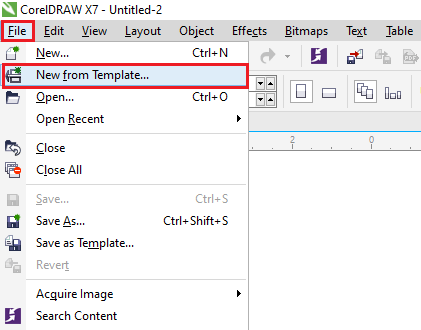Navigating CorelDRAW: A Comprehensive Guide to Finding and Utilizing Templates for Design Excellence

Introduction:
CorelDRAW stands as a powerhouse in the realm of graphic design software, offering a versatile suite of tools for creating stunning visual compositions. One of the key features that streamline the design process and inspire creativity is the availability of templates. Templates serve as pre-designed layouts or starting points for various projects, providing users with a foundation to build upon and customize according to their specific needs. In this extensive guide, we embark on a journey to explore the wealth of templates available in CorelDRAW, equipping users with the knowledge and techniques to leverage these resources for design excellence.
Understanding Templates in CorelDRAW:
Before diving into the process of finding and utilizing templates in CorelDRAW, it’s essential to understand what templates are and how they can benefit designers. Templates are pre-designed layouts or designs that serve as starting points for various projects, such as brochures, business cards, flyers, posters, and more. By using templates, designers can save time and effort by starting with a professionally designed layout and then customizing it to suit their specific requirements.
Finding Templates in CorelDRAW:
CorelDRAW offers multiple avenues for finding templates, catering to different preferences and workflows. Let’s explore some of the key methods for locating templates in CorelDRAW:
- Welcome Screen:
- Upon launching CorelDRAW, users are greeted with a Welcome Screen that provides quick access to various resources, including templates.
- Navigate to the “Get Started” tab on the Welcome Screen to access a collection of professionally designed templates organized by category.
- Template Library:
- CorelDRAW includes a built-in Template Library that houses a vast selection of templates for various design projects.
- Access the Template Library by navigating to the “File” menu > “New from Template” > “New from Template Library.”
- Online Resources:
- In addition to built-in templates, CorelDRAW offers access to an extensive library of online resources, including templates, clipart, fonts, and more.
- Navigate to the “Get More” tab on the Welcome Screen or visit the CorelDRAW website to browse and download additional templates.
- Community Contributions:
- CorelDRAW boasts a vibrant community of users who share templates, tips, and resources.
- Explore online forums, social media groups, and community websites dedicated to CorelDRAW to discover user-contributed templates and design inspiration.
Utilizing Templates in CorelDRAW:
Once you’ve found a template that suits your project needs, it’s time to utilize it effectively. Here’s a step-by-step guide to utilizing templates in CorelDRAW:
- Selecting a Template:
- Browse through the available templates and choose one that aligns with your project requirements and design aesthetic.
- Opening the Template:
- Double-click on the selected template or click “Open” to load it into CorelDRAW.
- Customizing the Template:
- Once the template is open, you can customize it to suit your specific needs.
- Edit text, images, colors, and other elements to align with your branding and design preferences.
- Saving Your Work:
- After customizing the template, save your work to preserve your changes and create a new, personalized design.
- Navigate to the “File” menu and select “Save As” to specify a file name and location for your project.
Advanced Techniques for Template Utilization:
Beyond the basics, CorelDRAW offers advanced techniques and features for maximizing the potential of templates:
- Creating Your Own Templates:
- Once you’ve customized a design to your liking, you can save it as a template for future use.
- Navigate to the “File” menu > “Save As Template” to save your design as a reusable template file.
- Exploring Template Variations:
- Many templates offer multiple variations or layouts to choose from.
- Explore different variations within a template to find the one that best suits your project requirements.
- Incorporating Custom Elements:
- Enhance pre-designed templates by incorporating custom elements such as logos, illustrations, and graphics.
- Use CorelDRAW’s drawing and design tools to create custom elements that complement the template’s design.
Conclusion:
In the dynamic world of graphic design, leveraging templates can significantly streamline the design process and inspire creativity. With CorelDRAW’s vast library of templates and intuitive design tools, designers can unlock their creative potential and bring their vision to life with ease and efficiency. Whether you’re a seasoned professional or a novice designer, exploring the wealth of templates available in CorelDRAW is sure to spark inspiration and elevate your designs to new heights of excellence. So, dive in, explore the myriad templates at your disposal, and watch as your creativity flourishes in the world of CorelDRAW design.




